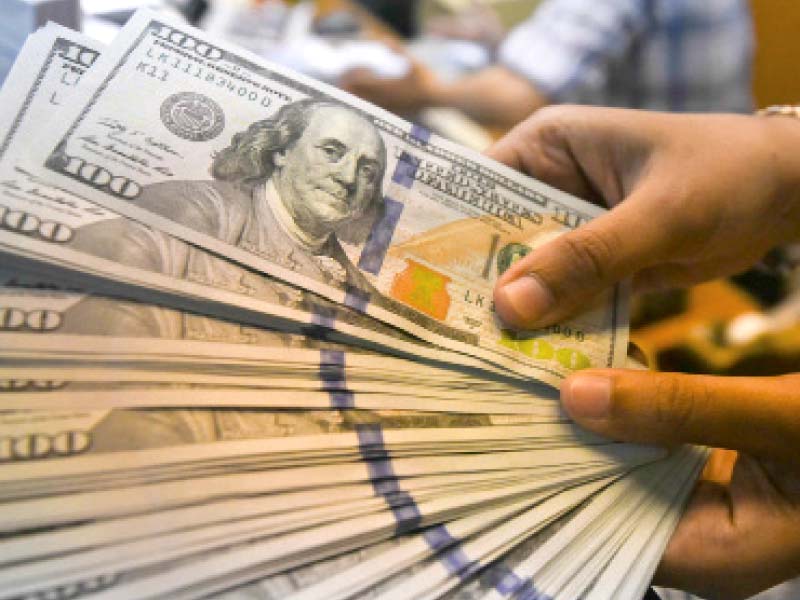
Following derailment of the International Monetary Fund (IMF) loan programme, the State Bank of Pakistan’s (SBP) reliance on loans to build foreign currency reserves has more than doubled to $5.8 billion, indicating that over $12 billion worth of gross official reserves were the result of borrowing.
As of August this year, the central bank borrowed $5.77 billion from commercial banks under the forward and currency swap arrangements, according to the SBP data.
Just six months ago, in February 2020 when Pakistan was implementing the IMF programme, the SBP’s borrowing under the swap and future contracts was $2.9 billion, including $1.6 billion in long-term contracts.
Short-term swap position at that time was $4.5 billion, which too increased by 29% within six months, according to the official statistics.
Before the start of the IMF programme in July last year, the SBP’s short-term borrowing had jumped to $7.8 billion, which the central bank started curtailing under an IMF condition.
The SBP’s increasing dependence on short-term contracts also indicates that the country’s external problems have not eased, despite claims by the government of Prime Minister Imran Khan.
Despite a significant reduction in the current account deficit in the last fiscal year, the SBP’s reserves inflated by a net $3 billion through short-term unsustainable means.
Had the SBP not taken $3 billion in more loans from commercial banks to inflate the reserves, its gross reserves could have dropped to single digit to the nervousness of the market.
In its response, the SBP cites Covid-19 as a reason for the increase in forward short positions.
Like its predecessor, the Pakistan Tehreek-e-Insaf (PTI) government has also failed to enhance exports and attract sufficient foreign direct investment to build foreign currency reserves on a sustainable basis.
Short-term borrowing of $5.8 billion has largely been secured from commercial banks, sources said. The $5.8 billion is also shown as part of both central bank and commercial banks’ reserves, according to sources.
Ministry of Finance’s former director general debt Dr Ashfaque Hasan Khan said last year that short-term borrowing was “clearly being double counted” In principle and it should have been excluded from commercial banks’ reserves.
As of October 2, the SBP’s reserves stood at $12.2 billion and private citizens’ reserves being held by commercial banks amounted to $7.2 billion.
Usable foreign currency reserves available with all commercial banks were $1.4 billion after excluding $5.8 billion in short-term loans.
Out of the $5.8 billion, the central bank has obtained $1.4 billion for one month, $2 billion for up to three months and $2.4 billion for up to one year, according to the SBP.
In 1998, the then PML-N government consumed foreign currency deposits of commercial banks after global powers imposed sanctions on Pakistan in retaliation for nuclear tests. However, to protect the depositors’ reserves, the central bank had started reporting separately both the official and private currency reserves.
Sources said net foreign currency reserves of the central bank would stand close to $1.4 billion, after excluding $10 billion in foreign public debt repayment in the next nine months.
They said $5.8 billion had to be excluded from the SBP’s gross official reserves of $12.2 billion, which would bring down the reserves to $6.4 billion. Then another $4 billion has to be excluded on account of Saudi Arabian ($2 billion) and United Arab Emirates ($2 billion) short-term loans.
Under the programme, the IMF had kept Pakistan under check by placing two main conditions. One was related to the net international reserves that are calculated by excluding the impact of currency swap loans. The other was to reduce the short-term loans obtained under currency swap arrangements.
Net international reserves (NIR) of the SBP were negative by nearly $12 billion in June 2019, according to an IMF report. Sources said NIR were now close to negative $8.5 billion after excluding all short-term liabilities.
SBP’s version
The Express Tribune sent questions to the central bank, requesting it to comment on the reasons behind over 100% increase in forward swaps, whether it was double-booking the amount, what were net reserves of the SBP and what was the interest rate being paid to commercial banks on loans of $5.8 billion.
As of end-June 2019, the SBP reserves were at $7.3 billion and the forward position was short by about $8 billion, said Abid Qamar, chief spokesman for the central bank.
Following a smooth transition to the market-determined exchange rate in May 2019, the SBP was able to take advantage of favourable market conditions and build its forex buffers with end-February 2020 SBP reserves at $12.8 billion and forward position short by $2.8 billion, he added.
“In the aftermath of Covid-19, as was the case with other emerging market economies, we saw a change in market dynamics, resulting in forward short position reaching $5.77 billion by the end of June 2020, which remained unchanged in July and August 2020,” said Qamar.
He said the SBP’s foreign exchange reserves are compiled as per IMF guidelines mentioned in the “Balance of Payments and International Investment Position Manual” and all these reserves were usable.
To a question on the interest paid to commercial banks, Qamar said “all our forex swap with banks are done at the prevailing interbank market rates whereby banks pay a premium (interest rate differential) to the SBP based on the interbank swap curve.”







1719053250-0/BeFunky-collage-(5)1719053250-0-270x192.webp)










COMMENTS
Comments are moderated and generally will be posted if they are on-topic and not abusive.
For more information, please see our Comments FAQ